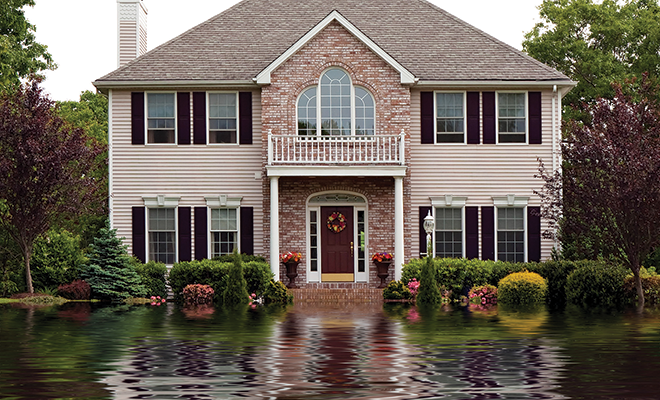
Flood Facts: Preparation With Insurance
Hurricanes Harvey, Irma, Nate and Maria dealt major blows to American citizens in 2017, resulting in millions of dollars of damage to both coastal and inland property. They may not have impacted you directly, but perhaps you’ve been wondering what to do in case a major storm heads your way.
It’s well known that you should be prepared with plenty of food and water, but what about flood insurance? It doesn’t take much water to wreak havoc on your home and belongings.
The National Flood Insurance Program, or NFIP, reports that only one inch of water in a 2,000-square-foot home could result in over $20,000 in damage. Most people don’t realize that flooding is the number one natural disaster in the United States, and the costliest. And big storms aren’t the only culprit; even new construction can change water flows below and above ground to cause flooding.
Do I Need Flood Insurance?
First, determine if you live in a flood zone. The Federal Emergency Management Agency has a map you can consult, but one of the best ways to know is whether you were required to have flood insurance when you bought your home. Most lenders require it if you live in an area considered to be at high risk for flooding and your mortgage is federally backed, such as by the Federal Housing Administration.
If you own your home free and clear of loans, you don’t have to have it, but most experts agree that since the insurance is so affordable compared with the cost of flood damage, it makes no sense not to have it. Remember, even small streams and creeks can flood.
And don’t automatically assume that your regular homeowner’s insurance will cover flooding. This is a huge misunderstanding, according to experts. Do your research.
FEMA allows private insurers to write and administer flood policies for the NFIP, which is the primary source of flood insurance for both homeowners and renters. Coverage is available in about 20,000 communities, but even if your community doesn’t take part in the national program, you will likely be able to get it from other insurance carriers.
What Factors Should I Consider?
There is a built-in time lag before coverage begins, usually 30 days after the policy is issued. If you are waiting for storm warnings, don’t.
Flood coverage has a cap of $250,000 for your home itself and contents can be insured up to $100,000. Some private carriers may offer coverage beyond these limits. The policy will pay either the value of your lost property or the cost of replacement, up to your limit. Note that flood policies insure against damage directly caused by flooding. Talk to your agent about the specific language and what it means so you know exactly what is covered.
Flood insurance will not pay for anything on your property outside of the walls, such as landscaping or decks. Nor will it pay for temporary housing expenses while your house is being repaired. If you lost a car, that is a claim for your auto insurance, not the flood insurance. If you work out of your home, you cannot claim business interruption expenses either.
The higher the deductible, the lower the premium for both contents and building coverage. For example, if you have a $250,000 policy and a 5 percent hurricane deductible, you’d have to pay $12,500 out of pocket before your insurance would cover any damages. In this case, paying a higher premium would mean less out-of-pocket expense when you file a claim. Weigh your risk.
How Much Does Flood Insurance Cost?
According to the NFIP, the current average cost is $672 per year. Of course, the true cost of your policy rests on how much coverage you require and how close to risk you are, especially in relation to water. Every state has insurers that carry flood insurance with the NFIP, but the premiums can vary by as much as $800 per year. For example, in Connecticut, the yearly premium is about $1,161, whereas in Arizona, it’s $482.
In April 2017, FEMA announced premiums would increase by an average of 6.3 percent and also capped increases at 15 to 18 percent annually for homes in the highest risk classes. Congress allows increases to help FEMA with huge payouts to homeowners.
And, due to the high number of recent flood claims to FEMA, it’s a good idea to keep an eye out for newly mapped Special Flood Hazard Areas, to be sure your home is not included and you miss out on coverage. Go to the NFIP website and enter your street address into the flood risk profile, or speak to your insurance agent ■
Sources: fema.gov, floodpartners.com and yahoo.com.







